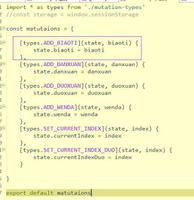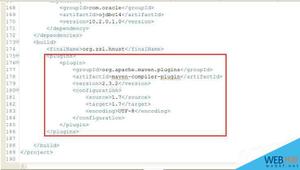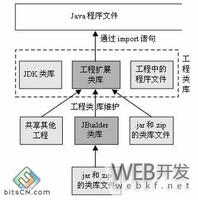java poi reader常用API汇总

注意:
(1)判断行的最大数量建议使用sheet.getLastRowNum();
(2)判断每行最大列数建议使用row.getLastCellNum();
【JAVA】特别注意,POI中getLastRowNum() 和getLastCellNum()的区别hssfSheet.getLastRowNum();//最后一行的下标,编号从0开始,即比行数小1。如果sheet中一行数据都没有,则返回-1,只有第一行有数据时,返回0
hssfSheet.getRow(k).getLastCellNum();//获取列数,比最后一列列标大1.如果row中一列数据都没有,则返回-1,只有第一列有数据时,返回1
getLastRowNum()获取的是最后一行的编号(编号从0开始)。
int org.apache.poi.ss.usermodel.Sheet.getLastRowNum()
Gets the last row on the sheet
Returns: last row contained in this sheet (0-based)
getPhysicalNumberOfRows获取有记录的行数,即:最后有数据的行是第n行,前面有m行是空行没数据,则返回n-m;
getPhysicalNumberOfCells
获取有记录的列数,即:最后有数据的列是第n列,前面有m列是空列没数据,则返回n-m;
getPhysicalNumberOfRows()获取的是物理行数,也就是不包括那些空行(隔行)的情况。
int org.apache.poi.ss.usermodel.Sheet.getPhysicalNumberOfRows()
Returns the number of physically defined rows (NOT the number of rows in the sheet)
java使用poi解析或处理excel的时候,如何防止数字变成科学计数法的形式当使用POI处理excel的时候,遇到了比较长的数字,虽然excel里面设置该单元格是文本类型的,但是POI的cell的类型就会变成数字类型。
而且无论数字是否小数,使用cell.getNumbericCellValue() 去获取值的时候,会得到一个double,而且当长度大一点的时候会变成科学计数法形式。
那么获取这个单元格的原始的数据,就其实是一个double怎么转换成整数的问题了。
使用DecimalFormat对这个double进行了格式话,随后使用format方法获得的String就是你想要的值了。
DecimalFormat df = new DecimalFormat("0");
String whatYourWant = df.format(cell.getNumericCellValue());
单元格内容换行:
Java利用POI生成Excel强制换行
1. 首先在需要强制换行的单元格里使用poi的样式,并且把样式设定为自动换行
HSSFCellStyle cellStyle=workbook.createCellStyle();cellStyle.setWrapText(true);
cell.setCellStyle(cellStyle);
2. 其次是在需要强制换行的单元格,使用/就可以实再强制换行
换行用"\r\n",和文本分开
HSSFCell cell = row.createCell((short)0);cell.setCellStyle(cellStyle);
cell.setCellValue(new HSSFRichTextString("hello/r/n world!"));
public class ImportExcel { private static Logger log = LoggerFactory.getLogger(ImportExcel.class);
/**
* 工作薄对象
**/
private Workbook wb;
/**
* 工作表对象
**/
private Sheet sheet;
/**
* 标题行号
*/
private int headerNum;
/**
* 构造函数
* @param path 导入文件,读取第1个工作表
* @param headerNum 标题行号,数据行等于标题行号+1
* @throws InvalidFormatException
* @throws IOException
*/
public ImportExcel(String fileName, int headerNum)
throws InvalidFormatException, IOException {
this(new File(fileName), headerNum);
}
/**
* 构造函数
* @param path 导入文件对象,读取第1个工作表
* @param headerNum 标题行号,数据行等于标题行号+1
* @throws InvalidFormatException
* @throws IOException
*/
public ImportExcel(File file, int headerNum)
throws InvalidFormatException, IOException {
this(file, headerNum, 0);
}
/**
* 构造函数
* @param path 导入文件
* @param headerNum 标题行号,数据行等于标题行号+1
* @param sheetIndex 工作表编号,以0开始
* @throws InvalidFormatException
* @throws IOException
*/
public ImportExcel(String fileName, int headerNum, int sheetIndex)
throws InvalidFormatException, IOException {
this(new File(fileName), headerNum, sheetIndex);
}
/**
* 构造函数
* @param path 导入文件对象
* @param headerNum 标题行号,数据行等于标题行号+1
* @param sheetIndex 工作表编号,以0开始、
* @throws InvalidFormatException
* @throws IOException
*/
public ImportExcel(File file, int headerNum, int sheetIndex)
throws InvalidFormatException, IOException {
this(file.getName(), new FileInputStream(file), headerNum, sheetIndex);
}
/**
* 构造函数
* @param file 导入文件对象
* @param headerNum 标题行号,数据行等于标题行号+1
* @param sheetIndex 工作表编号,以0开始、
* @throws InvalidFormatException
* @throws IOException
*/
/**
* 构造函数
* @param path 导入文件对象
* @param headerNum 标题行号,数据行等于标题行号+1
* @param sheetIndex 工作表编号,以0开始、
* @throws InvalidFormatException
* @throws IOException
*/
public ImportExcel(String fileName, InputStream is, int headerNum, int sheetIndex)
throws InvalidFormatException, IOException {
if (StringUtils.isBlank(fileName)){
throw new RuntimeException("导入文档为空!");
}else if(fileName.toLowerCase().endsWith("xls")){
this.wb = new HSSFWorkbook(is);
}else if(fileName.toLowerCase().endsWith("xlsx")){
this.wb = new XSSFWorkbook(is);
}else{
throw new RuntimeException("文档格式不正确?");
}
if (this.wb.getNumberOfSheets()<sheetIndex){
throw new RuntimeException("文档中没有工作表!");
}
this.sheet = this.wb.getSheetAt(sheetIndex);
this.headerNum = headerNum;
log.debug("Initialize success.");
}
/**
* 获取行对象
* @param rownum
* @return
*/
public Row getRow(int rownum){
return this.sheet.getRow(rownum);
}
/**
* 获取数据行号
* @return
*/
public int getDataRowNum(){
return headerNum+1;
}
/**
* 获取工作表中的最后一行的行号,以0开始
* @return
*/
public int getLastDataRowNum(){
return this.sheet.getLastRowNum();
}
/**
* 获取一行记录总的列数
* @return
*/
public int getLastCellNum(){
return this.getRow(headerNum).getLastCellNum();
}
/**
* 获取单元格的值
* @param row 获取的行
* @param column 获取单元格列号
* @return 单元格的值
*/
public Object getCellValue(Row row, int column){
Object val = "";
try{
Cell cell = row.getCell(column);
if (cell != null){
if (cell.getCellType() == Cell.CELL_TYPE_NUMERIC){
val = cell.getNumericCellValue();
}else if (cell.getCellType() == Cell.CELL_TYPE_STRING){
val = cell.getStringCellValue();
}else if (cell.getCellType() == Cell.CELL_TYPE_FORMULA){
val = cell.getCellFormula();
}else if (cell.getCellType() == Cell.CELL_TYPE_BOOLEAN){
val = cell.getBooleanCellValue();
}else if (cell.getCellType() == Cell.CELL_TYPE_ERROR){
val = cell.getErrorCellValue();
}
}
}catch (Exception e) {
return val;
}
return val;
}
/**
* 导入测试
*/
public static void main(String[] args) throws Throwable {
ImportExcel ei = new ImportExcel("import.xls", 0);
System.out.println(ei.getLastDataRowNum());
System.out.println(ei.getDataRowNum());
for (int i = ei.getDataRowNum(); i <= ei.getLastDataRowNum(); i++) {
Row row = ei.getRow(i);
System.out.println("Row num:"+i);
for (int j = 0; j < ei.getLastCellNum(); j++) {
Object val = ei.getCellValue(row, j);
System.out.print(val+", ");
}
System.out.print("\n");
}
}
}
以上是 java poi reader常用API汇总 的全部内容, 来源链接: utcz.com/z/392703.html









